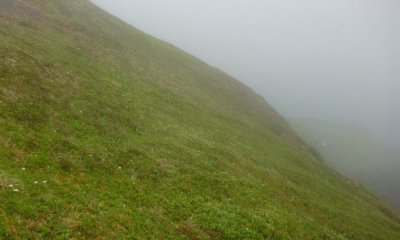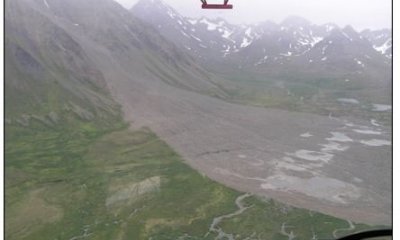
Western Alaska Maritime Dwarf Scrubland Gravelly Slopes, Very Steep
Scenario model
Current ecosystem state
Select a state
Management practices/drivers
Select a transition or restoration pathway
- Transition T1A More details
-
No transition or restoration pathway between the selected states has been described
Target ecosystem state
Select a state
State 1
Reference State




Description
The reference state supports two community phases that are distinguished by the developed structure and dominance of the vegetation and the ecological function and stability of the community (fig. 5). The reference community phase is scrubland consisting of shrubs, forbs, and graminoids.
This report provides baseline vegetation inventory data. Future data collection is needed to provide more information about existing plant communities and the disturbance regimes that would result in transitions from one community to another. Common and scientific plant names are from the USDA PLANTS database. All community phases are characterized by the Alaska Vegetation Classification System (Viereck et al., 1992).
Submodel
Description
This alternate state is the result of massive landslides. Smaller scale landslides create stable talus slopes, which lead to a partially vegetated early community phase (community 1.2). Massive landslides result in large, non-vegetated talus slopes that remain unstable (figs. 2 and 9). These unstable slopes are susceptible to continuous landslides and are not expected to become vegetated within 100 years. This alternate state is synonymous with ecological site R237XY250AK.
Submodel
Model keys
Briefcase
Add ecological sites and Major Land Resource Areas to your briefcase by clicking on the briefcase (![]() ) icon wherever it occurs. Drag and drop items to reorder. Cookies are used to store briefcase items between browsing sessions. Because of this, the number of items that can be added to your briefcase is limited, and briefcase items added on one device and browser cannot be accessed from another device or browser. Users who do not wish to place cookies on their devices should not use the briefcase tool. Briefcase cookies serve no other purpose than described here and are deleted whenever browsing history is cleared.
) icon wherever it occurs. Drag and drop items to reorder. Cookies are used to store briefcase items between browsing sessions. Because of this, the number of items that can be added to your briefcase is limited, and briefcase items added on one device and browser cannot be accessed from another device or browser. Users who do not wish to place cookies on their devices should not use the briefcase tool. Briefcase cookies serve no other purpose than described here and are deleted whenever browsing history is cleared.
Ecological sites
Major Land Resource Areas
The Ecosystem Dynamics Interpretive Tool is an information system framework developed by the USDA-ARS Jornada Experimental Range, USDA Natural Resources Conservation Service, and New Mexico State University.


